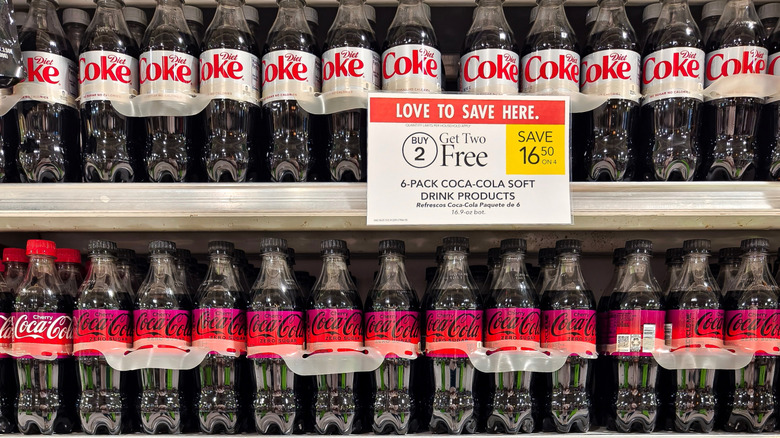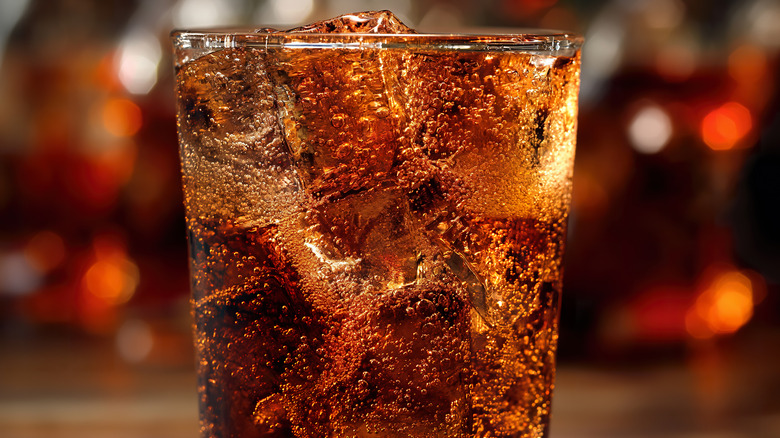What's The Actual Difference Between Diet Coke And Coke Zero?
Coca-Cola has been a classic soft drink for more than a century. The first glass of the soda was poured on May 8, 1886, in Jacobs' Pharmacy in Atlanta. That means Coca-Cola is more than 130 years old and is still going strong. Since its first pour, there have been numerous spin-offs of the soft drink, including Diet Coke, which debuted in 1982.
Diet Coke has now been around for more than 40 years. However, a few decades later, a stigma grew around the word "diet," which made a lot of food and beverage companies re-think their branding (you'll probably notice a lot of labels now say "zero sugar" instead of "diet" in hopes of casting a wider net to consumers). That's why Coca-Cola Zero was introduced in 2006 and then replaced by Coca-Cola Zero Sugar in 2016.
So, what actually is the difference between Diet Coke and Coca-Cola Zero Sugar? Both options are sugar-free and contain zero calories. The biggest difference is the taste. The Coca-Cola Company says Diet Coke has a lighter taste, thanks to a different blend of flavors, whereas Coca-Cola Zero Sugar both looks and tastes more like the original Coca-Cola recipe. Diet Coke uses more aspartame, which tastes a bit lighter. Coca-Cola Zero Sugar uses aspartame too, but combines it with acesulfame potassium, creating a more robust flavor that's closer to actual sugar.
Diet Coke is a better pick-me-up than Coke Zero
There is truly nothing better than a glass of fresh, crisp, bubbly soda, and if you can enjoy it without all the extra sugar that's definitely a bonus. But, what about the energy boost that sugary Coca-Cola gives you? Well, if you're looking for a pick-me-up, Diet Coke may be your best option: It contains more caffeine than Coke Zero Sugar.
And, while there are opposing loyalties when it comes to Coca-Cola versus Diet Coke, I'll just lay out my bias right now: I'm Team Diet Coke, and I know I'm not alone in my undying love for the soda. No matter what type of soda you like, there are also a ton of competing opinions on the best way to serve the beverage. Most regular soda drinkers have a ranking that goes something like this: can, glass bottle, plastic bottle, and fountain. Personally, I believe fountain beverages always taste the freshest.
And, while there's a reason behind why some fast food restaurants offer Pepsi and others offer Coca-Cola, McDonald's is widely held to be the best purveyor of soft drinks. There's actually a specific reason for this (hint: water filtration and the temperature of the beverage both contribute).

